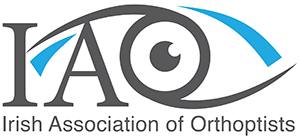Common Conditions
-
AMBLYOPIA – ( lazy eye)
What is a ‘’lazy eye’’?
This refers to an eye with reduced or poor vision. Lazy eye can often go undetected. It is a common condition affecting approximately 4 out of every 100 people.
What causes amblyopia?
Amblyopia is most commonly associated with
- A strabismus (squint)- when one eye is misaligned from the centre, this can be inward, outwards, up and down.
- The need for glasses.
How is amblyopia treated?
Occlusion therapy is normally used to improve the vision of the ‘lazy eye’. This is done by using a patch or drops to cover the better eye, forcing the ‘lazy eye’ to work harder and improve the child’s vision. Treatment for amblyopia is most effective before the age of 8.
An orthoptist is the expert in the diagnosis and treatment of this condition and will direct you as to the best treatment plan for your child.
.
-
STRABISMUS (mis-alignment of the eyes)
What is strabismus?
This is the medical term for when one eye turns inwards, outwards, up or down causing the eyes to be misaligned.
Strabismus can be present at a very early age or suddenly appear at any age. If a strabismus
How is strabismus treated?
Strabismus can be treated in several ways
- Glasses – In certain situation glasses can often improve or even fully correct the appearance of the strabismus
- Surgery – The aim of the surgery is reconstructive to straighten the eye that is turning. This is done by either strengthening or weakening the eye muscles that surround the eye.
Sometimes this is done on either one eye of both eye. More info: http://www.squintclinic.com/ - Botox – On some occasion Botox can be used to treat strabismus – this is done by directing botox into the eye muscle to reduce its effect.
-
Nystagmus
What is nystagmus?
Nystagmus is an involuntary movement of the eyes. This can be horizontal, vertical or circular.
Infantile nystagmus is nystagmus which is evident at birth or within the first 6 months of life, this may also be known as ‘congenital nystagmus’ or ‘early onset nystagmus’.
How common is nystagmus?
Nystagmus is believed to affect 1 in 1000 to 1 in 2000 individuals. It is usually a lifelong condition.
Does it affect vision?
Vision is usually reduced in infantile nystagmus. The degree to which it reduces can vary greatly. Many children with nystagmus require the need for glasses.
What causes Infantile nystagmus?
Often the cause is unknown. Nystagmus can be associated with a wide range of conditions such as albinism, retinal disorders, congenital cataracts and congenital glaucoma.
Further info : https://nystagmusnetwork.org -
Double Vision (diplopia)
This is when two images are recognised instead of one.
What causes double vision?
There are various causes of double vision, often when the eyes are misaligned due a nerve or muscle weakness, the brain can find it difficult to cope with this misalignment causing two images to be recognised.
How is double vision treated?
The orthoptist specialises in the diagnosis and treatment of diplopia and will investigate the cause of the double vision. Double vision can often be treated by the use of prisms. If this is unsuccessful an occlusive patch is sometimes used to remove the second image.


